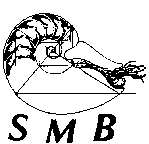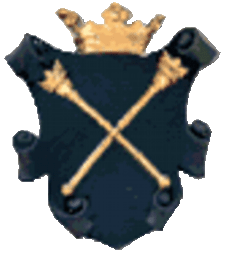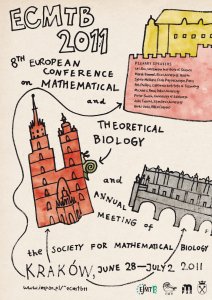Click on a title to see the list of talks; click on Time header to sort by time;
click here to
| Mini-symposium Title | Organizer/Chair | Time | |
|---|---|---|---|
| 1. | Vector-borne diseases | Ben Adams (Department of Mathematical Sciences, University of Bath, UK) | Tuesday, June 28, 14:30 |
| |||
| 2. | Modelling dengue fever epidemiology | Maíra Aguiar (Centro de Matemática e Aplicações Funamentais (CMAF), Lisbon University, Lisbon, Portugal) | Saturday, July 2, 08:30 |
| Bob Kooi | |||
| Nico Stollenwerk | |||
| Ezio Venturino | |||
| |||
| 3. | Recent developments in the study of Lotka-Volterra and Kolmogorov systems | Stephen Baigent (UCL) | Saturday, July 2, 14:30 |
| |||
| 4. | Connecting microscale and macroscale models of cellular migration | Ruth Baker (University of Oxford) | Tuesday, June 28, 17:00 |
| Matthew Simpson (Queensland University of Technology) | |||
| |||
| 5. | The emergence of resistance in cancer using mathematical modelling | David Basanta (Moffitt Cancer Center) | Saturday, July 2, 08:30 |
| |||
| 6. | Modeling physiological systems: model validation and experimental design issues | Jerry Batzel (University of Graz Institute for Mathematics and Scientific Computing) | Wednesday, June 29, 11:00 |
| Mette Olufsen (Department of Mathematics, North Carolina State University) | |||
| |||
| 7. | Ecology and evolution of infectious diseases | Barbara Boldin (Faculty of Mathematics, Natural Sciences and Technology, University of Primorska) | Friday, July 1, 14:30 |
| Eva Kisdi (Department of Mathematics and Statistics, University of Helsinki) | |||
| |||
| 8. | Game theoretical modelling and optimization in evolution and ecology I | Mark Broom (Centre for Mathematical Science, City University) | Tuesday, June 28, 11:00 |
| Krzysztof Argasinski (Department of Mathematics, University of Sussex) | |||
| |||
| 9. | Game theoretical modelling and optimization in evolution and ecology II | Mark Broom (Centre for Mathematical Science, City University) | Tuesday, June 28, 14:30 |
| Krzysztof Argasinski (Department of Mathematics, University of Sussex) | |||
| |||
| 10. | Multiscale modeling of biological systems: from physical tools to applications in cancer modeling I | Arnaud Chauviere (University of New Mexico) | Saturday, July 2, 08:30 |
| Haralampos Hatzikirou (University of New Mexico) | |||
| John Lowengrub (University of California - Irvine) | |||
| |||
| 11. | Multiscale modeling of biological systems: from physical tools to applications in cancer modeling II | Arnaud Chauviere (University of New Mexico) | Saturday, July 2, 11:00 |
| Haralampos Hatzikirou (University of New Mexico) | |||
| John Lowengrub (University of California - Irvine) | |||
| |||
| 12. | Plants, growth and transport processes I | Andrés Chavarría-Krauser (University of Heidelberg) | Tuesday, June 28, 11:00 |
| Mariya Ptashnyk (RWTH Aachen) | |||
| |||
| 13. | Plants, growth and transport processes II | Andrés Chavarría-Krauser (University of Heidelberg) | Tuesday, June 28, 14:30 |
| Mariya Ptashnyk (RWTH Aachen) | |||
| |||
| 14. | Mathematical Modeling of Mosquito-Borne Diseases | Nakul Chitnis (Swiss Tropical and Public Health Institute) | Tuesday, June 28, 11:00 |
| |||
| 15. | Modeling Dynamics of Complex Biological Systems | Ching-Shan Chou (Department of Math and MBI, Ohio State University) | Tuesday, June 28, 17:00 |
| Richard Gejji (MBI, Ohio State University) | |||
| |||
| 16. | Multiscale modelling of reaction kinetics in biology | Simon Cotter (University of Oxford) | Tuesday, June 28, 14:30 |
| |||
| 17. | Modeling viral hepatitis dynamics in-vivo and in-vitro in the era of direct anti-viral agents I | Harel Dahari (Theoretical Biology and Biophysics, Los Alamos National Laboratory, Los Alamos, NM 87545, USA) | Tuesday, June 28, 17:00 |
| Avidan Neumann (Faculty of Life Sciences, Bar-Ilan University, Ramat-Gan 52900, Israel) | |||
| |||
| 18. | Modeling viral hepatitis dynamics in-vivo and in-vitro in the era of direct anti-viral agents II | Harel Dahari (Theoretical Biology and Biophysics, Los Alamos National Laboratory, Los Alamos, NM 87545, USA) | Wednesday, June 29, 08:30 |
| Avidan Neumann (Faculty of Life Sciences, Bar-Ilan University, Ramat-Gan 52900, Israel) | |||
| |||
| 19. | Statistical methods in computational neuroscience II | Susanne Ditlevsen (University of Copenhagen, Dept Mathematical Sciences) | Wednesday, June 29, 17:00 |
| |||
| 20. | Multiscale mathematics of liver: bridging molecular systems biology to virtual physiological human scale | Dirk Drasdo (INRIA, Paris-Rocquencourt, France) | Wednesday, June 29, 11:00 |
| Stefan Hoehme (IZBI, University of Leipzig, Germany) | |||
| |||
| 21. | Bridging the Divide: Cancer Models in Clinical Practice | Marisa Eisenberg (Mathematical Biosciences Institute, Ohio State University) | Thursday, June 30, 11:30 |
| Harsh Jain (Mathematical Biosciences Institute, Ohio State University) | |||
| |||
| 22. | Bridging Time Scales in Biological Sciences | Konstantin Fackeldey (Konrad Zuse Institut Berlin, Berlin, Germany) | Saturday, July 2, 14:30 |
| Susanna Röblitz (ZIB, Berlin, Germany) | |||
| Marcus Weber (Konrad Zuse Institut Berlin, Berlin, Germany) | |||
| |||
| 23. | Delay Differential Equations and Applications I | Urszula Foryś (University of Warsaw, Faculty of Math. Inf. Mech., Inst. Appl. Math. Mech.) | Friday, July 1, 14:30 |
| Monika Joanna Piotrowska (University of Warsaw, Faculty of Math. Inf. Mech., Inst. Appl. Math. Mech.) | |||
| |||
| 24. | Delay Differential Equations and Applications II | Urszula Foryś (University of Warsaw, Faculty of Math. Inf. Mech., Inst. Appl. Math. Mech.) | Saturday, July 2, 08:30 |
| Monika Joanna Piotrowska (University of Warsaw, Faculty of Math. Inf. Mech., Inst. Appl. Math. Mech.) | |||
| |||
| 25. | Reports from US - African BioMathematics Initiative: Conservation Biology | Holly Gaff (Old Dominion University) | Saturday, July 2, 14:30 |
| |||
| 26. | Mathematical models of gene regulation | Tomas Gedeon (Montana State University) | Tuesday, June 28, 11:00 |
| |||
| 27. | Heart rate dynamics: models and measures of complexity (part I) | Grzegorz Graff (Gdańsk University of Technology) | Wednesday, June 29, 14:30 |
| Beata Graff (Medical University of Gdańsk) | |||
| |||
| 28. | Heart rate dynamics: models and measures of complexity (part II) | Grzegorz Graff (Gdańsk University of Technology) | Wednesday, June 29, 17:00 |
| Beata Graff (Medical University of Gdańsk) | |||
| |||
| 29. | Applications of nonnegative Radon measure spaces with metric structure to population dynamic models | Piotr Gwiazda (University of Warsaw) | Wednesday, June 29, 17:00 |
| Anna Marciniak-Czochra (University of Heidelberg) | |||
| |||
| 30. | Modeling and analysis of tumor invasion I | Haralampos Hatzikirou (University of New Mexico) | Tuesday, June 28, 11:00 |
| Andreas Deutsch (Dresden University of Technology, Germany) | |||
| Arnaud Chauviere (University of New Mexico) | |||
| |||
| 31. | Modeling and analysis of tumor invasion II | Haralampos Hatzikirou (University of New Mexico) | Tuesday, June 28, 14:30 |
| Andreas Deutsch (Dresden University of Technology, Germany) | |||
| Arnaud Chauviere (University of New Mexico) | |||
| |||
| 32. | Epidemic models: Networks and stochasticity I | Thomas House (University of Warwick) | Wednesday, June 29, 14:30 |
| Istvan Kiss (University of Sussex) | |||
| |||
| 33. | Epidemic models: Networks and stochasticity II | Thomas House (University of Warwick) | Thursday, June 30, 11:30 |
| Istvan Kiss (University of Sussex) | |||
| |||
| 34. | From one to many: Cell-based modeling of collective, emergent behaviors in biology -I | Yi Jiang (Los Alamos National Laboratory) | Tuesday, June 28, 11:00 |
| |||
| 35. | From one to many: Cell-based modeling of collective, emergent behaviors in biology -II | Yi Jiang (Los Alamos National Laboratory) | Tuesday, June 28, 14:30 |
| |||
| 36. | Epidemics of Neglected Tropical Diseases | Roberto Kraenkel (São Paulo State University, Brazil) | Wednesday, June 29, 11:00 |
| |||
| 37. | Models in Spatial Ecology | Roberto Kraenkel (São Paulo State University, Brazil) | Tuesday, June 28, 17:00 |
| |||
| 38. | Cell migration during development: modelling and experiment | Paul Kulesa (Stowers Institute for Medical Research) | Saturday, July 2, 08:30 |
| Ruth Baker (University of Oxford) | |||
| |||
| 39. | Biofluids, Solute Transport, and Hemodynamics | Anita Layton (Department of Mathematics, Duke University) | Wednesday, June 29, 11:00 |
| S. Randall Thomas (IR4M UMR8081 CNRS Univ. Paris-Sud, Orsay, & Institut Gustave-Roussy, Villejuif, France) | |||
| |||
| 40. | Analysis of mathematical models for cancer growth and treatment, Part I | Urszula Ledzewicz (Southern Illinois University, USA) | Tuesday, June 28, 11:00 |
| Alberto d'Onofrio (European Institute of Oncology, Italy) | |||
| |||
| 41. | Analysis of mathematical models for cancer growth and treatment, Part II | Urszula Ledzewicz (Southern Illinois University, USA) | Tuesday, June 28, 14:30 |
| Alberto d'Onofrio (European Institute of Oncology, Italy) | |||
| |||
| 42. | Analysis of mathematical models for cancer growth and treatment, Part III | Urszula Ledzewicz (Southern Illinois University, USA) | Tuesday, June 28, 17:00 |
| Alberto d'Onofrio (European Institute of Oncology, Italy) | |||
| |||
| 43. | Analysis of mathematical models for cancer growth and treatment, Part IV | Urszula Ledzewicz (Southern Illinois University, USA) | Wednesday, June 29, 08:30 |
| Alberto d'Onofrio (European Institute of Oncology, Italy) | |||
| |||
| 44. | Analysis of mathematical models for cancer growth and treatment, Part V | Urszula Ledzewicz (Southern Illinois University, USA) | Wednesday, June 29, 11:00 |
| Alberto d'Onofrio (European Institute of Oncology, Italy) | |||
| |||
| 45. | Turing !! Turing?? on morphogenesis via experimental and theoretical approaches | S. Seirin Lee (The University of Tokyo, Japan) | Wednesday, June 29, 17:00 |
| |||
| 46. | Statistical Analysis of Biological Signals I | Jacek Leśkow (Nowy Sacz Graduate School of Business - National Louis University) | Saturday, July 2, 08:30 |
| |||
| 47. | Statistical Analysis of Biological Signals II | Jacek Leśkow (Nowy Sacz Graduate School of Business - National Louis University) | Saturday, July 2, 11:00 |
| |||
| 48. | Fluid-structure interaction problems in biomechanics | Sookkyung Lim (University of Cincinnati, USA) | Saturday, July 2, 08:30 |
| |||
| 49. | Modeling of immune responses and calcium signaling I | Tomasz Lipniacki (Institute of Fundamental Technological Research, PAS, Warsaw) | Tuesday, June 28, 17:00 |
| Bogdan Kaźmierczak (Institute of Fundamental Technological Research, PAS, Warsaw) | |||
| Marek Kimmel (Rice University, Dept. of Statistics, Houston, Texas) | |||
| |||
| 50. | Modeling of immune responses and calcium signaling II | Tomasz Lipniacki (Institute of Fundamental Technological Research, PAS, Warsaw) | Wednesday, June 29, 14:30 |
| Bogdan Kaźmierczak (Institute of Fundamental Technological Research, PAS, Warsaw) | |||
| Marek Kimmel (Rice University, Dept. of Statistics, Houston, Texas) | |||
| |||
| 51. | Modeling of immune responses and calcium signaling III | Tomasz Lipniacki (Institute of Fundamental Technological Research, PAS, Warsaw) | Wednesday, June 29, 17:00 |
| Bogdan Kaźmierczak (Institute of Fundamental Technological Research, PAS, Warsaw) | |||
| Marek Kimmel (Rice University, Dept. of Statistics, Houston, Texas) | |||
| |||
| 52. | Modeling of immune responses and calcium signaling IV | Tomasz Lipniacki (Institute of Fundamental Technological Research, PAS, Warsaw) | Saturday, July 2, 08:30 |
| Bogdan Kaźmierczak (Institute of Fundamental Technological Research, PAS, Warsaw) | |||
| Marek Kimmel (Rice University, Dept. of Statistics, Houston, Texas) | |||
| |||
| 53. | Modeling of immune responses and calcium signaling V | Tomasz Lipniacki (Institute of Fundamental Technological Research, PAS, Warsaw) | Saturday, July 2, 11:00 |
| Bogdan Kaźmierczak (Institute of Fundamental Technological Research, PAS, Warsaw) | |||
| Marek Kimmel (Rice University, Dept. of Statistics, Houston, Texas) | |||
| |||
| 54. | B and T cell immune responses | Yoram Louzoun (Bar Ilan University) | Wednesday, June 29, 11:00 |
| |||
| 55. | Modeling of collective phenomena in biological systems | Danuta Makowiec (Institute of Theoretical Physics and Astrophysics, Gdansk University, Poland) | Saturday, July 2, 08:30 |
| |||
| 56. | Mathematical Models in Eco-epidemiology I | Horst Malchow (University of Osnabrück, Department of Mathematics & Computer Science, Institute of Environmental Systems Research, Barbarastr. 12, 49076 Osnabrück, Germany) | Wednesday, June 29, 08:30 |
| Sergei V. Petrovskii (Department of Mathematics, University of Leicester, Leicester LE1 7RH, UK) | |||
| Ezio Venturino (Dipartimento di Matematica "Giuseppe Peano", via Carlo Alberto 10, 10123 Torino, Italy) | |||
| |||
| 57. | Mathematical Models in Eco-epidemiology II | Horst Malchow (University of Osnabrück, Department of Mathematics & Computer Science, Institute of Environmental Systems Research, Barbarastr. 12, 49076 Osnabrück, Germany) | Wednesday, June 29, 11:00 |
| Sergei V. Petrovskii (Department of Mathematics, University of Leicester, Leicester LE1 7RH, UK) | |||
| Ezio Venturino (Dipartimento di Matematica "Giuseppe Peano", via Carlo Alberto 10, 10123 Torino, Italy) | |||
| |||
| 58. | Information, human behaviour and infection control | Piero Manfredi (Dipartimento di Statistica e Matematica Applicata all'Economia, Università di Pisa, Via Ridolfi 10, Pisa, 56124, Italy) | Saturday, July 2, 08:30 |
| Alberto d'Onofrio (Dept. of Experimental Oncology European Institute of Oncology , Via Ripamonti 435 , 20141 Milano (Italy)) | |||
| |||
| 59. | Information, human behaviour and disease | Piero Manfredi (Dipartimento di Statistica e Matematica Applicata all'Economia, Università di Pisa, Via Ridolfi 10, Pisa, 56124, Italy) | Saturday, July 2, 11:00 |
| Alberto d'Onofrio (Dept. of Experimental Oncology European Institute of Oncology , Via Ripamonti 435 , 20141 Milano (Italy)) | |||
| |||
| 60. | Stem cells and cancer | Anna Marciniak-Czochra (University of Heidelberg) | Wednesday, June 29, 14:30 |
| Heiko Enderling (Tufts University) | |||
| |||
| 61. | Structure and Dynamics of Biochemical Reaction Networks I | Maya Mincheva (Northern Illinois University) | Tuesday, June 28, 14:30 |
| Casian Pantea (University of Wisconsin-Madison) | |||
| |||
| 62. | Structure and Dynamics of Biochemical Reaction Networks II | Maya Mincheva (Northern Illinois University) | Tuesday, June 28, 17:00 |
| Casian Pantea (University of Wisconsin-Madison) | |||
| |||
| 63. | Mathematical Modelling of Macromolecules and Molecular Aggregates | Rubem Mondaini (BIOMAT Consortium/ Federal University of Rio de Janeiro/CT-COPPE) | Saturday, July 2, 14:30 |
| |||
| 64. | Crowd Dynamics: Modeling, Analysis and Simulation (Part 1) | Adrian Muntean (Institute for Complex Molecular Systems (ICMS) and Center for Analysis, Scientific computing and Applications (CASA), Department of Mathematics, TU Eindhoven, The Netherlands) | Wednesday, June 29, 11:00 |
| |||
| 65. | Crowd Dynamics: Modeling, Analysis and Simulation (Part 2) | Adrian Muntean (Institute for Complex Molecular Systems (ICMS) and Center for Analysis, Scientific computing and Applications (CASA), Department of Mathematics, TU Eindhoven, The Netherlands) | Wednesday, June 29, 14:30 |
| |||
| 66. | Multiscale modelling of biological systems: the Chaste framework | James Osborne (The University of Oxford (Computational Biology Group)) | Tuesday, June 28, 11:00 |
| |||
| 67. | Mathematical modeling of biomechanical regulation in bone tissue (Session I) | Peter Pivonka (The University of Western Australia) | Wednesday, June 29, 08:30 |
| Stefan Scheiner | |||
| Pascal Buenzli | |||
| |||
| 68. | Mathematical modeling of biomechanical regulation in bone tissue (Session II) | Peter Pivonka (The University of Western Australia) | Wednesday, June 29, 11:00 |
| Stefan Scheiner | |||
| Pascal Buenzli | |||
| |||
| 69. | Computational toxicology and pharmacology - in silico drug activity and safety assessment | Sebastian Polak (Jagiellonian University Medical College Faculty of Pharmacy) | Saturday, July 2, 11:00 |
| Aleksander Mendyk (Dept. of Drug Technology and Biopharmaceutics Faculty of Pharmacy Jagiellonian University Medical College) | |||
| |||
| 70. | Speciation | Tadeas Priklopil (University of Helsinki) | Wednesday, June 29, 08:30 |
| |||
| 71. | Mathematical models of evolutionary dynamics of infectious agents | Andrea Pugliese (University of Trento) | Tuesday, June 28, 17:00 |
| Viggo Andreasen (University of Roskilde) | |||
| |||
| 72. | Undergraduate Biomathematics Education Beyond BIO 2010 (Part I) | Raina Robeva (Sweet Briar College) | Wednesday, June 29, 14:30 |
| Timothy Comar (Benedictine University) | |||
| Meghan Burke (Kennesaw State University) | |||
| |||
| 73. | Undergraduate Biomathematics Education Beyond BIO 2010 (Part II) | Raina Robeva (Sweet Briar College) | Saturday, July 2, 08:30 |
| Timothy Comar (Benedictine University) | |||
| Meghan Burke (Kennesaw State University) | |||
| |||
| 74. | Stochastic models in computational neuroscience I | Laura Sacerdote (Dept. Mathematics, University of Torino) | Wednesday, June 29, 14:30 |
| |||
| 75. | Noisy Cells | Alexander Skupin (Max Planck Institute of Molecular Plant Physiology, Potsdam, Germany; Luxembourg Centre for System Biomedicine, Luxembourg) | Saturday, July 2, 14:30 |
| Rudiger Thul (University of Nottingham, UK) | |||
| |||
| 76. | Recent advances in infectious disease modelling I | Robert Smith? (The University of Ottawa) | Saturday, July 2, 11:00 |
| Elissa Schwartz (Washington State University) | |||
| Stanca Cuipe (University of Louisiana, Lafayette) | |||
| |||
| 77. | Recent advances in infectious disease modelling II | Robert Smith? (The University of Ottawa) | Saturday, July 2, 14:30 |
| Elissa Schwartz (Washington State University) | |||
| Stanca Cuipe (University of Louisiana, Lafayette) | |||
| |||
| 78. | Mechanical Models of Movement and Growth of Cells and Tissues I | Magdalena Stolarska (University of St. Thomas, St. Paul, MN, USA) | Wednesday, June 29, 14:30 |
| |||
| 79. | Mechanical Models of Movement and Growth of Cells and Tissues II | Magdalena Stolarska (University of St. Thomas, St. Paul, MN, USA) | Wednesday, June 29, 17:00 |
| |||
| 80. | Mechanics of the cytoskeleton and cortical actin at the cellular level | Wanda Strychalski (University of California, Davis) | Saturday, July 2, 08:30 |
| Guillaume Salbreux (Max Planck Institut für Physik komplexer Systeme) | |||
| |||
| 81. | Moving Organisms: From Individuals to Populations | Christina Surulescu (ICAM, WWU Münster) | Wednesday, June 29, 17:00 |
| |||
| 82. | Semigroups of Operators in Mathematical Biology I | Horst Thieme (School of Mathematical and Statistical Sciences Arizona State University Tempe, Arizona, 85287-1804) | Wednesday, June 29, 08:30 |
| Adam Bobrowski (Lublin University of Technology, Nadbystrzycka 38A, 20-618 Lublin, Poland.) | |||
| |||
| 83. | Semigroups of Operators in Mathematical Biology II | Horst Thieme (School of Mathematical and Statistical Sciences Arizona State University Tempe, Arizona, 85287-1804) | Saturday, July 2, 11:00 |
| Adam Bobrowski (Lublin University of Technology, Nadbystrzycka 38A, 20-618 Lublin, Poland.) | |||
| |||
| 84. | Epidemiology, Eco-Epidemiology and Evolution | Ezio Venturino (Univ. Torino) | Saturday, July 2, 11:00 |
| Nico Stollenwerk (CMAF, Univ. Lisbon) | |||
| |||
| 85. | The dynamics of interacting cell systems: from intercellular interaction to tissue-level traits I | Anja Voss-Boehme (Center for High Performance Computing (ZIH), Technical University Dresden, Germany) | Wednesday, June 29, 14:30 |
| |||
| 86. | The dynamics of interacting cell systems: from intercellular interaction to tissue-level traits II | Anja Voss-Boehme (Center for High Performance Computing (ZIH), Technical University Dresden, Germany) | Wednesday, June 29, 17:00 |
| |||
| 87. | Multi-scale mathematics of the liver: From intracellular signaling to intercellular interaction | Anja Voss-Boehme (Center for High Performance Computing (ZIH), Technical University Dresden, Germany) | Wednesday, June 29, 08:30 |
| Andreas Deutsch | |||
| |||
| 88. | Fractals and Complexity I | Przemyslaw Waliszewski (Department of Urology, Philipps University, Marburg, Germany) | Wednesday, June 29, 14:30 |
| |||
| 89. | Fractals and Complexity II | Przemyslaw Waliszewski (Department of Urology, Philipps University, Marburg, Germany) | Wednesday, June 29, 17:00 |
| |||
| 90. | Mathematical modelling of physiological processes in patients on dialysis | Jacek Waniewski (Institute of Biocybernetics and Biomedical Engineering PAS) | Saturday, July 2, 11:00 |
| |||
| 91. | Modelling biofilms: from gene regulation to large-scale structure and function | John Ward (University of Loughborough) | Wednesday, June 29, 17:00 |
| Fordyce Davidson (University of Dundee) | |||
| |||
| 92. | Mathematical modeling and simulations of angiogenesis I | Xiaoming Zheng (Central Michigan University, USA) | Wednesday, June 29, 08:30 |
| Trachette Jackson (University of Michigan, USA) | |||
| Roeland Merks (Netherlands Institute for Sytems Biology (NISB) Centrum Wiskunde & Informatica (CWI) Amsterdam, The Netherlands) | |||
| |||
| 93. | Mathematical modeling and simulations of angiogenesis II | Xiaoming Zheng (Central Michigan University, USA) | Wednesday, June 29, 11:00 |
| Trachette Jackson (University of Michigan, USA) | |||
| Roeland Merks (Netherlands Institute for Sytems Biology (NISB) Centrum Wiskunde & Informatica (CWI) Amsterdam, The Netherlands) | |||
| |||
| 94. | Systems Biology of Development | Walter de Back | Saturday, July 2, 14:30 |
| Lutz Brusch (Technische Universität Dresden, Germany) | |||
| Andreas Deutsch | |||
| |||





